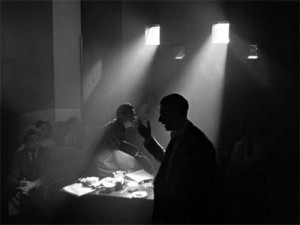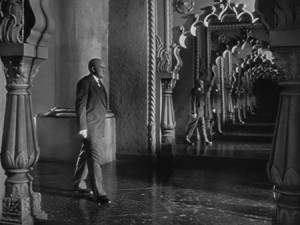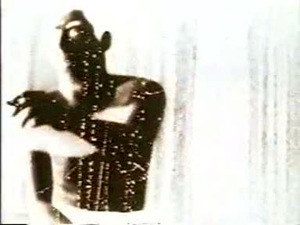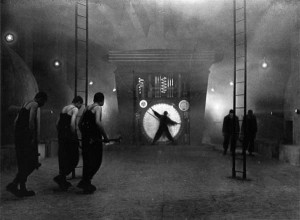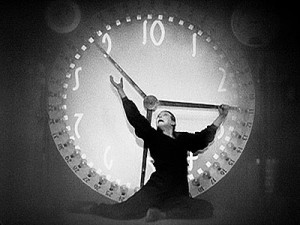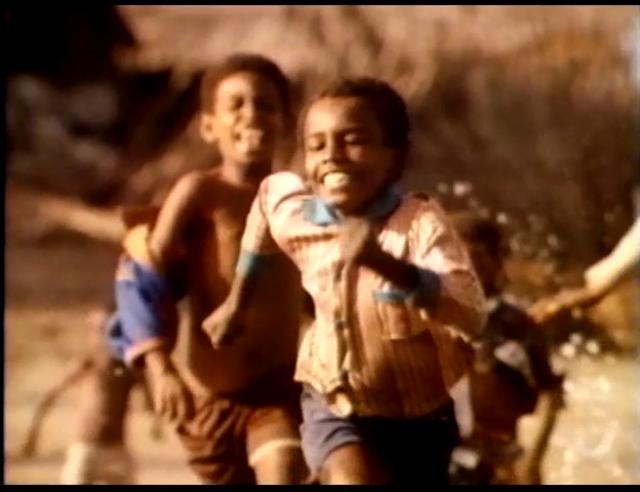
And Our Bodies Will Grow Transparent by: The Work of Mike Hoolboom by Janet Harbord (Vertigo, 2005)
The recurring, obsessive thematic of Mike Hoolboom’s work is the question of what images can do for us and what we choose to do with them. His mode of interrogation is not an abstract musing on the subject but an urgent demand to understand the implications of quotidian life being doubled in the act of visual recording. Is this a process, as five-year-old-Jack suggests, of bracketing the immediate and vicarious experience of the present, in its sensuous, playful and dangerous contingency? Do images take from life (rendering us increasingly transparent), or add to it? And what, in the context of a burgeoning digital archive of image memories, do we do with them?
Hoolboom’s work offers a complex meditation on the possible responses to these questions. As a filmmaker drawing extensively from the archive of classic and found images, his practice is deeply implicated in the circulation of the past as repetition. Indeed, towards the end of Imitations of Life , an intertitle reads: “We are already pillaging our world of pictures; incapable of reinvention we revive dead fashions, turn the past into a history of styles.”
From a film that opens with a scene from Citizen Kane (1941) and proceeds to journey through a compendium of classical film quotations, Hoolboom could be regarded as conducting his own raid on the memory store-bank. Yet the quotation is specific, targeted; the scene from Orson Welles plays a man lost in a hall of mirrors. Citizen Kane is a film probing, of course, the concept of identity, one that returns us in the final moment to an instant in childhood, an image as frozen and irretrievable as the toy snow scene. Hoolboom tropes this moment to enquire how the past may orientate us into the future; if we are not to leave our collective cultural memories frozen and sealed over, how can they be made useful?
Film as a technology, as a set of changing practices, materials, rituals, is in evidence here. The subject of the technological resonates powerfully in the present, a present in which the chemical culture of celluloid slips into a hybrid relationship with the digital code. Yet, if the response to digitalization has already sedimented into a plaintive discourse for celluloid, Hoolboom approaches the subject from awry. It is not only the materiality of film that is mutating, but what we understand as the human, irrevocably tied up with technology. From images of retinal scans to a fetus floating in the waiting-chamber of a womb, the body is a translucent, permeable object. The curious beauty of the images suggests that the body is not subject to technology but intimately known through its workings. Here technology is already in us, as much as it is in the world. This is an enquiry into the emergent choreography of technology and human life. We, as much as films, are innocent monsters.
Film here is a prosthesis, an extension of ourselves. In Tom (2002), an experimental feature-length documentary and biography of New York filmmaker Tom Chomont, we rarely see the subject of the film. His story is told through the images of a public, anonymous past, of New York in the depression, in its moment of reconstruction, in the utopian height of its buildings. Tom speaks a minimal narration, of his mother’s first sexual encounter, of his won sexual relations with his brother, and of his bodily symptoms from AIDS. But when we are allowed an image of Tom, it is often as a character behind a camera, the mechanical substituting the eye. This is not a displacement of the human, but rather, filmic imaging is a primary way in which the subject has learnt to inhabit the world. And we are treated to a selection of extracts from his work, Hoolboom mixes it all up, public and private, abstraction and emotion, body and image, past and present.
This is work in which digital compositing lends itself to the analogy of memory, the frame thick with layers of ghostly images, each necessarily diluting the others. The more layers we add, the less clearly we see, is the implication. The weight of the past clouds the present, but the past provides an endless store of stories to be told. Hoolboom’s work is a practice of association in two senses, first in terms of the depth of the image, in the layers that mingle, cross and multiply. Second, it is associative in the chain of visual tropes that thread story together. The images do not signify alone, but in relation. This is a practice in which the indexical relation to the ‘real’ has all but disappeared from film, and creative production is relocated in the art of editing. It is a practice of assemblage, material gleaned from the garbage, from a store of personal film, from the classical texts of our film culture, pasted into new and tangential relations. Perhaps more than anything, this work suggests that the connections between things, the relations we forge with images, with others, with the past, are ‘the thing itself.’ Film is nothing more substantial than a creative play of connections.
Imitations of Life , a film in ten parts, demands that viewer invent the threads between these components. It is a film that moves haltingly toward a picture of the future. Dystopia is one possibility, a world in which we are the children of Fritz Lang and bill gates, where DNA has been depleted and there are only five types of faces, where sex tourism is the primary relation with elsewhere, where images of death, torture and suffering are the pictures that compel us. The tone of the film oscillates restlessly between lassitude and compulsion, as it rides this particular tension: that film is culpable in graphically summonsing our dystopian future and, simultaneously, that films are “time machines built for mourning.”
Equal to dystopia, however, is the potential for films to do the work of remembering and thus reparation; at times “they are all that stand between us and our desire to destroy everything.” These are films heavy with love, for the subjects who take part in his work, for the potential of the present, and for the culture of the image itself. In moments, Hoolboom’s work assumes the beatudinous mantle of Tarkovsky, in the epic visionary qualities of a film like Stalker . At other times, the filmmaker is caught in the intimate pleasures of narrating his nephew’s imaginary view of the world. It is the movement between such different spaces, and the edit as the imposed gap and electrical leap of a connection, that is the power of this work.
Originally published in: Vertigo Vol. 2 No. 9, Autumn/Winter 2005
